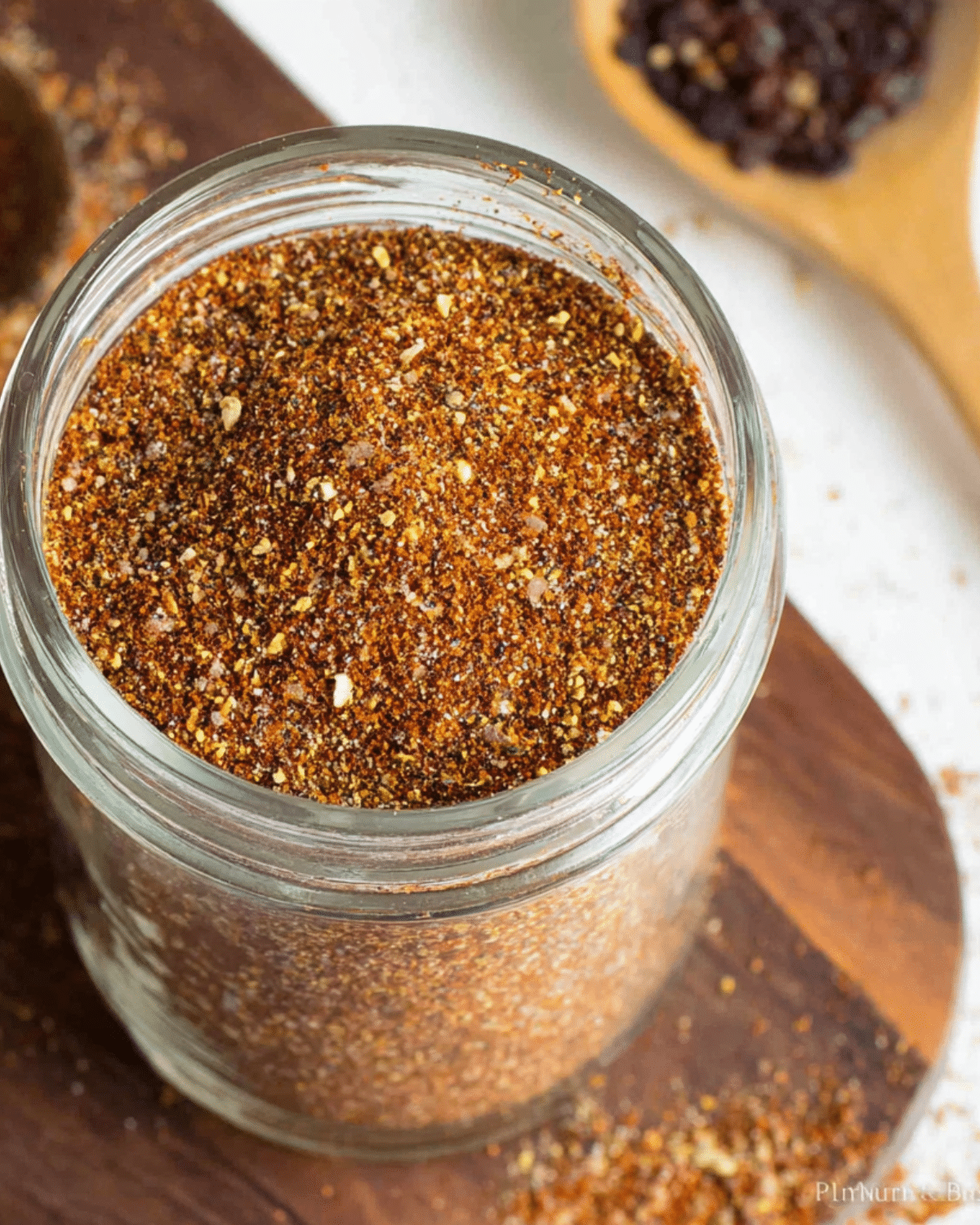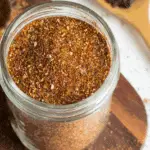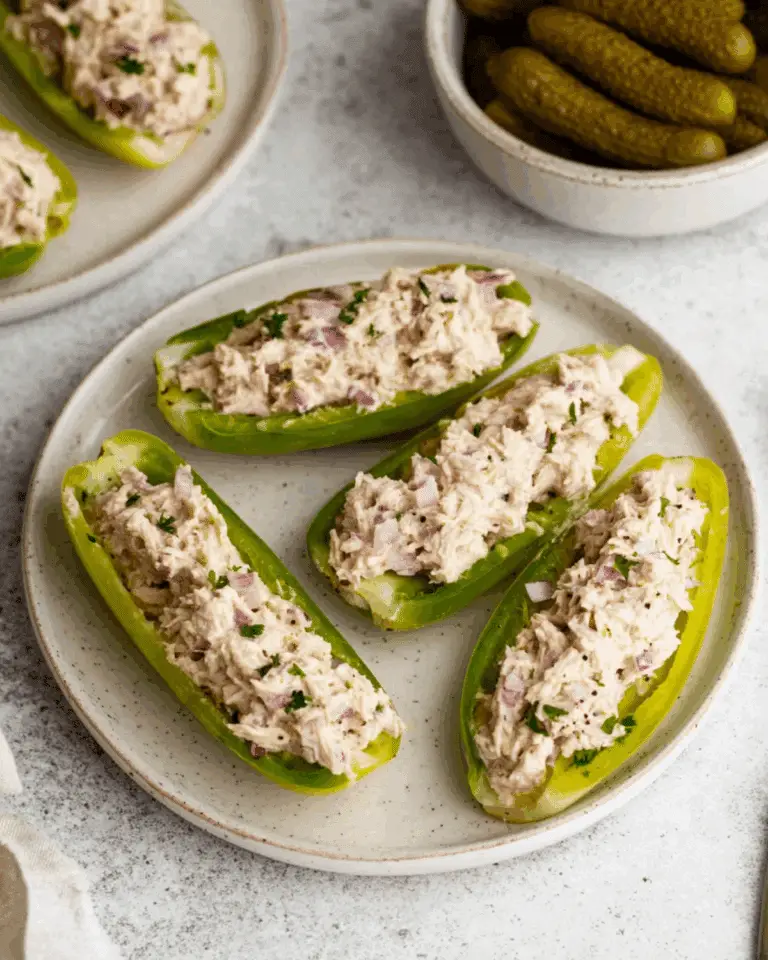Whether it’s Taco Tuesday or just a quick weeknight dinner, nothing brings bold, authentic flavor to the table like a solid taco seasoning. But here’s the kicker — those store-bought packets? They’re often packed with fillers, preservatives, and way too much salt. This article will walk you through how to make your own homemade taco seasoning that’s not only healthier and cheaper, but also far more flavorful. You’ll get a breakdown of the best spices to use, how to store your blend, and creative ways to elevate everyday meals using this DIY mix. Don’t miss our chicken tacos with grilled pineapple salsa — it pairs beautifully with this seasoning.
JUMP TO
Table of Contents
Why Homemade Taco Seasoning Is Worth It
Better flavor, fewer fillers
You might be surprised to learn that many popular taco seasoning packets are filled with things like cornmeal or maltodextrin — ingredients that have nothing to do with authentic Mexican flavor. With a homemade blend, every bit of seasoning is packed with purpose. You’re using fresh, aromatic spices like chili powder, cumin, and smoked paprika — not just filler. The result is a rich, balanced flavor that genuinely enhances your tacos, soups, or burritos.
Saves money in the long run
Sure, those $1 seasoning packets might seem cheap, but they add up fast — especially if tacos are a regular dinner staple in your house. Making your own seasoning from bulk pantry spices is not only cost-effective, but it also reduces waste. With a few teaspoons of commonly-used ingredients, you’ll get enough seasoning to flavor multiple meals. Looking for inspiration? Try our easy Mexican cucumber salad as a refreshing side dish for taco night.
No hidden preservatives
One of the biggest benefits of going the homemade route is knowing exactly what you’re putting into your food. Store-bought blends can contain anti-caking agents, MSG, or even added sugar. When you make taco seasoning yourself, you skip all that — and still get all the flavor. This is especially helpful for anyone managing food allergies or following clean eating guidelines. Discover great ideas like our Mexican potatoes recipe that pair perfectly with clean, homemade seasoning.
Taco Seasoning Ingredients Breakdown
The essential spices for authentic flavor
At the heart of every great taco seasoning blend is a mix of chili powder and cumin. Chili powder gives you warmth and mild heat, while cumin offers that signature earthy, nutty base. From there, paprika adds a touch of sweetness and depth, garlic and onion powders layer in savory flavor, and salt and black pepper bring it all together.
Here’s a typical base mix to make about 3 tablespoons (the equivalent of one packet):
| Spice | Amount |
|---|---|
| Chili Powder | 1 tbsp |
| Ground Cumin | 2 tsp |
| Smoked Paprika | 1 tsp |
| Sea Salt | 1 tsp |
| Black Pepper | 1 tsp |
| Garlic Powder | ½ tsp |
| Onion Powder | ½ tsp |
| Dried Oregano | ½ tsp |
| Red Pepper Flakes | Pinch (optional) |
This blend is perfect for tacos, but also versatile enough for nachos, taco salads, and even grilled veggies.
Optional additions to customize heat
Want to dial up the heat? You can easily customize your seasoning. Try adding a pinch of cayenne, chipotle powder, or extra red pepper flakes. If you prefer more smokiness, double the smoked paprika. Just be sure to test your batch after mixing, especially if you’re sensitive to heat or spice.
Smoked vs. sweet paprika — what to choose
Paprika can transform your blend. Sweet paprika gives mild color and subtle sweetness, while smoked paprika adds depth and complexity. For classic taco flavor with a Tex-Mex edge, smoked paprika is the better choice. However, if you’re seasoning something delicate like white fish tacos, a lighter hand with sweet paprika works great. Don’t miss our Mexican street corn and shrimp where smoky notes play beautifully with creamy textures.
How to Make Taco Seasoning at Home
Step-by-step mixing instructions
Making this blend takes less than 5 minutes. Just follow these steps:
- Measure each spice accurately and pour into a small bowl.
- Stir everything together until evenly combined.
- Transfer to a clean spice jar or airtight container.
How much seasoning equals one taco packet?
One store-bought packet typically holds about 2–3 tablespoons of taco seasoning. So if your recipe calls for a packet, just scoop out the same amount from your homemade mix. For ground beef, the rule of thumb is:
- 2 to 3 tablespoons per 1 pound of meat
- Add ½ cup of water to help it coat and simmer evenly
Check out our healthy street corn pasta salad — a great dish to try your new seasoning with!
Batch prep and smart storage tips
Once you fall in love with this blend (and you will), go ahead and multiply the recipe by 4 or 5. Homemade seasoning stays fresh for up to 6 months if stored properly.
Storage Tips:
- Use an airtight glass jar
- Keep in a cool, dry pantry
- Label with the date of mixing
- Avoid direct sunlight and moisture
Looking for something festive to store your blend in? Don’t miss our easy Halloween snack mix recipe — the perfect excuse to grab some cute seasonal jars!
Best Ways to Use Homemade Taco Seasoning
Ground beef tacos and beyond
Homemade taco seasoning isn’t just for tacos — though it absolutely transforms them. Start with a classic: brown 1 pound of ground beef, drain the fat, then stir in 2 to 3 tablespoons of your seasoning with ½ cup of water. Let it simmer until thickened, and you’ve got taco night perfection. But why stop there?
Use the same method for turkey, shredded chicken, or even plant-based meat substitutes. The seasoning adds depth and a smoky bite that elevates simple proteins without overpowering them. Want to shake things up? Try using the seasoned mix in enchiladas, burrito bowls, taco-stuffed peppers, or nachos.
Pro tip: Our chicken tacos with grilled pineapple salsa is a must-try combo with this blend — sweet, spicy, and absolutely unforgettable.
Use in snacks and sides too
Taco seasoning has a place far beyond main courses. Sprinkle it over roasted potatoes, sweet potato fries, or even popcorn for a bold, savory snack. Mix a teaspoon into sour cream or Greek yogurt for a quick taco dip or creamy topping for baked potatoes and wraps.
Roasting vegetables? Toss cauliflower florets or zucchini slices in olive oil and a bit of taco seasoning, then roast at 400°F until golden and crisp. You’ll get a veggie side with attitude — bold, smoky, and packed with flavor.
Looking for inspiration? Try our flavor-packed Mexican potatoes recipe and give it a taco twist with a dash of seasoning before roasting.
Transform butter and dressings
One of the most overlooked uses for taco seasoning is compound butter. Just mash a teaspoon of the seasoning into softened butter, and you’ve got a game-changer. Spread it over grilled corn, add it to mashed potatoes, or melt it onto seared steaks.
Salads need a punch? Whisk the seasoning into olive oil and lime juice for a zesty vinaigrette. It’s especially great on taco salads with beans, lettuce, avocado, and crushed tortilla chips. The bold spice mix helps balance creamy ingredients like sour cream or avocado-based dressings.
Common Mistakes to Avoid When Making Taco Seasoning
Using stale spices
It doesn’t matter how perfect your blend is — if the spices you’re using are old, your seasoning will fall flat. Spices lose potency over time, especially when exposed to heat, light, or air.
Here’s a quick test: open your jar of chili powder or cumin and take a deep sniff. If the aroma is faint or musty, toss it. Fresh spices should have a punchy, rich smell. It’s the difference between “meh” tacos and ones that make you go back for seconds.
Not balancing salt and spice
A lot of homemade recipes skip the salt to keep the blend “flexible,” but that’s risky. Salt is essential for balancing the warmth of chili powder and the bitterness of oregano. Without it, your seasoning may taste flat.
Start with a moderate amount — about 1 teaspoon of fine sea salt per 3-tablespoon batch — and adjust to taste. You can always add more when cooking. But don’t skip it entirely.
Forgetting to taste test
The final mistake? Storing your seasoning without testing it first. Just pinch a small amount and taste it on your tongue or mix it into a spoonful of yogurt or sour cream. This gives you a preview of the balance between spicy, salty, smoky, and herbal flavors.
If something feels off — maybe too much cumin or not enough heat — you can tweak the batch before storing it. Once sealed in a jar, that blend becomes your go-to. So make it great from the start.

FAQs About Taco Seasoning
How long does homemade taco seasoning last?
Stored in an airtight container in a cool, dry place, homemade taco seasoning lasts up to 6 months. Make sure the spices you use are fresh when you mix them.
What is the best substitute for chili powder?
If you’re out of chili powder, you can mix smoked paprika with a pinch of cayenne and cumin. It won’t be identical, but it adds similar warmth and depth.
Can I make a salt-free taco seasoning?
Absolutely. Just leave out the salt and season your food during cooking. This is a great option if you’re on a low-sodium diet or want more control over final flavors.
Is taco seasoning gluten-free?
Homemade taco seasoning is naturally gluten-free, as long as all the spices you use are certified gluten-free and haven’t been cross-contaminated.
How spicy is taco seasoning?
That depends on your chili powder and whether you add red pepper flakes or cayenne. You can adjust the heat level easily by using mild spices or leaving out the hot ones.
Can I use it in vegetarian recipes?
Definitely. Taco seasoning adds bold flavor to beans, lentils, roasted vegetables, or tofu. It’s a great way to amp up plant-based meals without extra effort.
Conclusion: Skip the Store — Make This Easy Taco Seasoning Recipe Instead
If you’ve ever wondered whether making taco seasoning at home is worth it, the answer is a loud, flavorful yes. Not only does it taste better, but it also gives you full control over ingredients — no MSG, fillers, or mystery additives. From weeknight ground beef tacos to elevated compound butters, this simple spice mix pulls its weight in every corner of your kitchen.
And once you’ve tried it, you won’t go back to the packets. It’s faster than a grocery run, cheaper than pre-made blends, and so versatile you’ll want to sprinkle it on everything. Discover great ideas like our Mexican street corn and shrimp or healthy street corn pasta salad to put that homemade seasoning to delicious use.
PrintTaco Seasoning
This homemade taco seasoning is a bold, preservative-free blend that comes together in just 5 minutes. It’s more flavorful, healthier, and cheaper than store-bought packets, perfect for tacos, veggies, dips, and more.
- Prep Time: 5 minutes
- Cook Time: 0 minutes
- Total Time: 5 minutes
- Yield: 3 tablespoons (equivalent to 1 packet)
- Category: Condiments
- Method: Mixing
- Cuisine: Mexican, Tex-Mex
- Diet: Gluten Free
Ingredients
- 1 tbsp chili powder
- 2 tsp ground cumin
- 1 tsp smoked paprika
- 1 tsp fine sea salt
- 1 tsp ground black pepper
- 1/2 tsp garlic powder
- 1/2 tsp onion powder
- 1/2 tsp dried oregano
- Pinch red pepper flakes (optional)
Instructions
- Measure out all spices and place them in a small bowl.
- Mix thoroughly until well combined.
- Transfer to an airtight container or spice jar.
- Store in a cool, dry place for up to 6 months.
- Use 2–3 tablespoons per 1 pound of meat, with 1/2 cup water.
Notes
- Use fresh spices for best flavor — check aroma before using.
- You can double or triple the batch and store it for months.
- Adjust the heat level by increasing or omitting red pepper flakes.
- Great in taco meat, soups, dips, veggies, and compound butter.
Nutrition
- Serving Size: 1 teaspoon
- Calories: 7
- Sugar: 0g
- Sodium: 194mg
- Fat: 0.3g
- Saturated Fat: 0g
- Unsaturated Fat: 0.3g
- Trans Fat: 0g
- Carbohydrates: 1g
- Fiber: 0.3g
- Protein: 0.3g
- Cholesterol: 0mg








